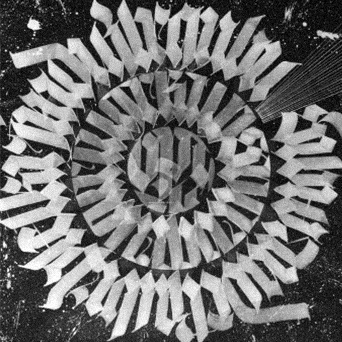Why Token Discovery and Real-Time Price Tracking Are Game-Changers for DeFi Traders
Ever had that jittery feeling when you stumble upon a new token just before it moons? Yeah, me too. Honestly, the crypto space feels like chasing fireflies on a summer night—some glow bright, others fade fast. Token discovery isn’t just a neat trick; it’s become essential for anyone who wants to stay ahead in DeFi. But tracking prices in real-time? Well, that’s a whole different beast, especially when markets move faster than a New York minute.
Here’s the thing. Most folks rely on those big-name aggregators, but they often miss out on the latest gems lurking on decentralized exchanges. Initially, I thought that was just the nature of decentralized chaos. But then I realized—nope, there’s gotta be a better way to get timely, precise data without drowning in noise.
Trust me, this stuff matters more than you think. Market cap analysis, for example, isn’t just a number; it’s a pulse check on a token’s health. But how do you interpret it when market caps are constantly fluctuating with every trade? I mean, you could guess, or you could get granular and real-time. That’s where tools like the dexscreener official site come into play.
Wow! That site is something else. It pulls token data across multiple chains, showing prices, liquidity, volumes—all live. You get that instant feedback loop, which is crucial when you’re trying to decide if you should jump in or bail out. But let me back up a bit…
See, back when I first dabbled in DeFi, tracking token prices was a nightmare. I remember refreshing different DEXs manually, losing track, missing out on pumps. My instinct said there had to be a tool that could aggregate this chaos. Turns out, there is.
Okay, so check this out—token discovery isn’t just about finding new coins. It’s about filtering through the noise and spotting real opportunities. The market’s flooded with tokens that have little to no liquidity, or worse, are scams. How do you separate wheat from chaff? By using platforms that rank tokens based on volume, liquidity, and price action in real-time.
Something felt off about relying solely on market cap, too. At face value, it’s market cap = price × circulating supply. Simple enough, right? But actually, that number can be misleading if the circulating supply is inflated or if tokens are locked away. So, it’s critical to dig deeper.
On one hand, a rising market cap might signal growing interest. Though actually, if that rise is driven by price manipulation or low volume, it’s a red flag. So, combining real-time price tracking with liquidity data is, in my opinion, the smarter play.
That’s why I’m biased towards tools that integrate all these data points seamlessly. The dexscreener official site is one of those platforms that really nails this balance. It’s like having a radar for the DeFi ocean—spotting new tokens as they surface, tracking their price swings, and seeing how market cap evolves in real-time.

But here’s something that bugs me: many traders overlook liquidity depth. You might see a token price rocketing, but if liquidity is shallow, your buy or sell order could tank the price. So, real-time liquidity tracking is very very important, and guess what? Not all platforms give you that in an easy-to-digest format.
Personally, I like to check volume spikes alongside price changes. Sudden surges often precede big moves, but they can also signal pump-and-dump schemes. I’m not 100% sure there’s a perfect indicator, but combining multiple metrics—price, volume, liquidity, and market cap—gives a more reliable picture.
Now, about market cap again—there’s also the concept of fully diluted market cap, which assumes all tokens are in circulation. It’s a useful thought experiment, but it can inflate the perceived value dramatically. So, when you’re browsing tokens, keep an eye on how supply metrics are presented.
Oh, and by the way, I’ve noticed that some tokens with low market caps can explode overnight, but they’re also riskier. It’s kinda like betting on a long shot at the racetrack. You can win big, but you can also lose your shirt. So, your risk tolerance shapes how you interpret these numbers.
Thinking about it, token discovery tools that integrate social sentiment or developer activity are also gaining traction. While price and market cap tell one story, community engagement and ongoing development hint at sustainability. Of course, these factors are harder to quantify in real-time, but they add valuable context.
Initially, I thought relying on price charts alone was enough. Actually, wait—let me rephrase that—charts are critical, but without context, they’re just lines on a screen. You gotta connect dots: is a price spike backed by volume, or is it a flash in the pan?
So yeah, getting back to the main point—if you’re serious about DeFi trading, you need a dashboard that updates live, offers granular token insights, and lets you discover tokens before they trend. That’s why I keep coming back to the dexscreener official site. It’s not perfect, but it’s definitely a step ahead of the often stale or lagging data on many platforms.
Here’s a quick story: I caught a token early last month because I saw its liquidity pool getting funded rapidly, and the volume started spiking. The price was still low, but on that tool, I could see the real-time metrics behaving differently than usual. That gave me a heads-up others missed, and yeah, it paid off.
Something I’m still trying to wrap my head around is how these data points interact during extreme volatility. Sometimes, price and volume decouple in ways that confuse even seasoned traders. I’m not 100% sure if that’s a bug or a feature of decentralized markets, but it’s definitely a puzzle worth watching.
To wrap this wandering thought up (but not too neatly), token discovery and price tracking tools have evolved from nice-to-have to absolutely necessary. DeFi moves fast, and if you’re not equipped with the right data in real-time, you’re basically flying blind. So, yeah, I recommend giving that dexscreener official site a spin—see if it fits your style.
Anyway, I’m still learning as I go. But one thing’s clear: the more you can integrate live analytics with your gut instincts, the better your edge in this wild crypto frontier. There’s always more to uncover, but for now, that’s my two cents.













